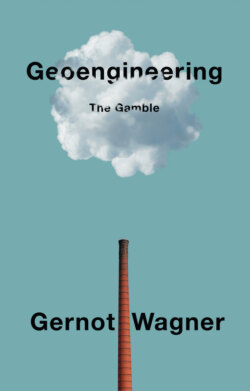Читать книгу Geoengineering - Gernot Wagner - Страница 7
A long history of healthy skepticism
ОглавлениеAll of us having worked on solar geoengineering have stories on how we got to work on the topic. Most came to it hesitantly – some after a lifetime of work on cutting CO2 emissions.
Geochemist Wally Broecker left an indelible imprint on the climate science community. In 1975, he introduced the term “global warming” into the literature, after the phenomenon had previously been known by the slightly cumbersome moniker “inadvertent climate modification.”1 In a video message, recorded from his hospital bed, for a 2018 “Planetary Management Symposium” at Arizona State University, Broecker said: “If we are going to prevent the planet from warming up another couple of degrees, we’re going to have to go to geoengineering.” Broecker did not arrive at this conclusion lightly, in what would turn out to be his final address to his scientific colleagues before his passing.
Broecker was, in fact, highly skeptical of solar geoengineering as a possible climate intervention. I remember him having a number of probing questions, when, in 2013, David Keith came to give a talk on the importance of solar geoengineering research at a climate policy seminar at Columbia University’s Faculty House. Broecker’s main worry, like that of most others, was that mere talk of geoengineering – especially, once again, the “solar” variety – might detract from the need to cut CO2 in the first place, a concept often called “moral hazard.”
It was precisely this worry that had led to a long-standing, self-imposed, unspoken near-moratorium on solar geoengineering research within the scientific community. Broecker had been a key member of the high-powered group that authored a section on CO2 as part of a 1965 report by President Lyndon B. Johnson’s Science Advisory Committee on “Restoring the Quality of Our Environment.”2 The report did not mention cutting CO2 emissions as a possible option for addressing climate change. Doing so apparently seemed inconceivable at the time. Instead, it mentioned one possible method of addressing the problem: brightening ocean surfaces in an attempt to reflect more sunlight back into space and cool the planet.
In hindsight, this singular focus on solar geoengineering in the 1965 report was a clear mistake, and one the scientific community has overcorrected for over the course of the coming decades. In 1974, Russian scientist Mikhail Budyko first proposed what has since become the most prominent solar geoengineering method: stratospheric aerosols – introducing tiny reflective particles into the upper atmosphere.3 Budyko’s proposal was translated into English in 1977. It was briefly known as “Budyko’s blanket,” but mentions of it in the scientific literature and especially public climate discourse soon disappeared.
A 1992 National Academies report picks up on the possibility,4 but it was not until the 2000s that the technology reemerged in broader scientific and climate conversations. After hearing vague mentions of solar geoengineering in the early 2000s, followed by quick dismissals, I first encountered solar geoengineering in earnest shortly after the late Nobel laureate Paul Crutzen wrote his now famous essay presenting stratospheric sulfur injections as a possible way “to resolve a policy dilemma.”5
The dilemma: Air pollution in the form of sulfur dioxide (SO2) kills millions each year; it also helps cool the planet. For example, Europe having begun to clean up its air pollution in the 1980s was clearly beneficial. Medieval cathedrals were no longer melting under acid rain. Forests – and people – are healthier. However, the Arctic is now around 0.5°C warmer as a direct result of decreased SO2 emissions.6 These are clear tradeoffs.
Crutzen, in his essay, presented this moral quandary. His essay was published jointly with one written by the late Ralph Cicerone, himself a famed atmospheric scientist and then the President of the U.S. National Academies of Sciences, who wrote in support of Crutzen’s controversial essay and of further research.7 While Crutzen and Cicerone’s essays did much to lift the self-imposed research moratorium, skepticism throughout the research and policy communities has remained to this day. I would hasten to add that much of that skepticism is, in fact, still healthy. Solar geoengineering is not a topic one should “embrace,” in any sense of the term. That goes for policymakers as much as for researchers “merely” trying to answer lingering scientific questions. To this day, much of the skepticism, in turn, can be explained by “moral hazard” worries, a topic we will discuss in depth in Chapter 7.
